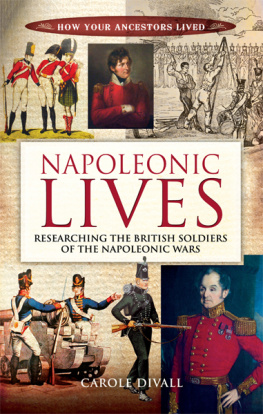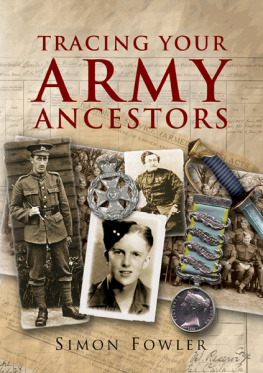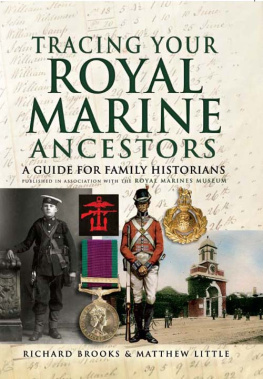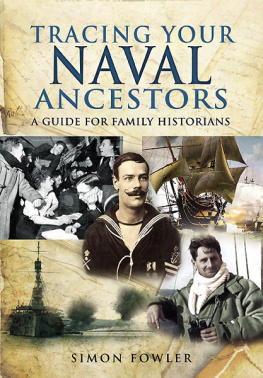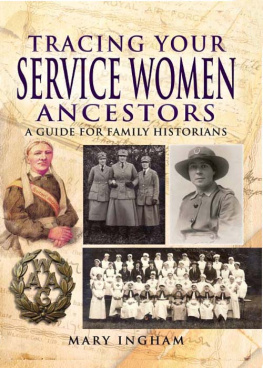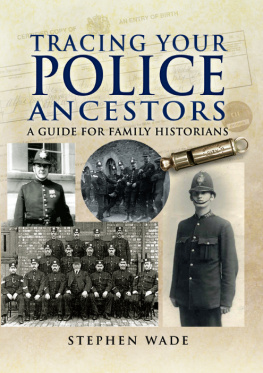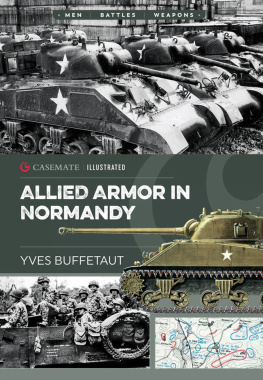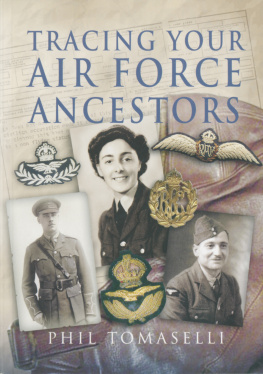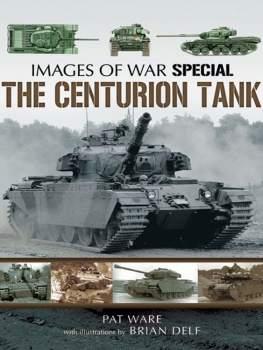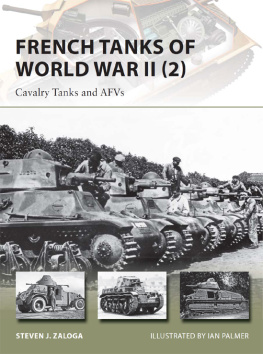TRACING YOUR TANK ANCESTORS
If you want to find out about the career of a soldier who served in tanks, are researching medals awarded to a tank crew member or just want to know more about a particular regiment, squadron or operation, this book will point you in the right direction.
Assuming that the reader has little prior knowledge of the history of British armoured forces, Janice Tait and David Fletcher trace their development from their formation during the First World War, through the Second World War and on to their role as an essential part of the British Army of the present day. Most important, they demonstrate how you can explore this history for yourself. They describe the records that are available and show how they can help you to reconstruct the career of a soldier who served in tanks or was connected with them. They also describe the kind of work the soldiers did, the armoured vehicles they worked with, and the men and women they served alongside.
This accessible, information-packed introduction to the history of British armoured forces will be essential reading and reference for anyone who is researching this aspect of military history.
Janice Tait is the librarian at the Tank Museum, responsible for the archive. Having a keen interest in family history research, Janice handles the many family history enquiries that arrive in the archive almost on a daily basis.
David Fletcher is the historian at the Tank Museum. He is one of the foremost experts on the history of British tanks and armoured vehicles. Among his many books are The British Tanks 191519, Tanks and Trenches: First Hand Accounts of Tank Warfare in the First World War and a series of studies of the key tanks of the two world wars.
FAMILY HISTORY FROM PEN & SWORD
Tracing Your Yorkshire Ancestors
Rachel Bellerby
Your Royal Marine Ancestors
Richad Brooks and Matthew Little
Your Rural Ancestors
Jonathan Brown
Tracing Your Pauper Ancestors
Robert Burlison
Tracing Your Labour Movement Ancestors
Mark Crail
Tracing Your Army Ancestors
Simon Fowler
A Guide to Military History on the Internet
Simon Fowler
Tracing Your Northern Ancestors
Keith Gregson
Your Irish Ancestors
Ian Maxwell
Tracing Your Scottish Ancestors
Ian Maxwell
Tracing Your London Ancestors
Jonathan Oates
Tracing Your Air Force Ancestors
Phil Tomaselli
Tracing Your Secret Service Ancestors
Phil Tomaselli
Tracing Your Criminal Ancestors
Stephen Wade
Tracing Your Police Ancestors
Stephen Wade
Tracing Your Jewish Ancestors
Rosemary Wenzerul
Fishing and Fishermen
Martin Wilcox
First published in Great Britain in 2011 by
PEN & SWORD FAMILY HISTORY
an imprint of
Pen & Sword Books Ltd
47 Church Street
Barnsley
South Yorkshire
S70 2AS
Copyright The Tank Museum, 2011
ISBN 978 1 84884 264 9
Digital Edition ISBN 978 1 84468 664 3
The right of the Tank Museum to be identified as Authors of this Work has been asserted by them in accordance with the Copyright, Designs and Patents Act 1988.
A CIP catalogue record for this book is available from the British Library.
All rights reserved. No part of this book may be reproduced or transmitted in any form or by any means, electronic or mechanical including photocopying, recording or by any information storage and retrieval system, without permission from the Publisher in writing.
Typeset in Palatino and Optima by
CHIC MEDIA LTD
Printed and bound in England by
CPI UK
Pen & Sword Books Ltd incorporates the imprints of
Pen & Sword Aviation, Pen & Sword Family History,
Pen & Sword Maritime, Pen & Sword Military, Pen & Sword Discovery,
Wharncliffe Local History, Wharncliffe True Crime,
Wharncliffe Transport, Pen & Sword Select, Pen & Sword
Military Classics, Leo Cooper, The Praetorian Press, Remember When,
Seaforth Publishing and Frontline Publishing
For a complete list of Pen & Sword titles please contact
PEN & SWORD BOOKS LTD
47 Church Street, Barnsley, South Yorkshire, S70 2AS, England
E-mail:
Website: www.pen-and-sword.co.uk
INTRODUCTION
M y father was in the Tank Corps: a statement that injects a certain amount of nervous caution into the hearts of people such as Janice and I when we deal with family history enquiries at the Tank Museum. You see, to us the Tank Corps is a very particular thing, covering a very specific period, from the summer of 1917 until October 1923. Before the earlier date it did not exist and even the word tank, in the context that we use it, held little meaning for most people. After the second date the correct title was the Royal Tank Corps, and from April 1939 the Royal Tank Regiment and it is by those dates that we define what we are talking about. However, to most people this would appear to be irrelevant detail.
In fact it is worse than that, as we have learned. Many enquirers use the term Tank Corps to mean any regiment that went to war in tanks at almost any time, be they cavalry, yeomanry or infantry and indeed, upon investigation, one has found that in some cases the person involved was a member of the Royal Artillery or the Royal Engineers or even the Royal Marines. They all served in tanks, or things that looked like tanks, but they were not members of the Royal Armoured Corps and beyond a few general suggestions we are unable to help. These distinctions are lost on most people but if we were to say that it is a bit like going into Waitrose to return something you had bought in Tesco you might have some idea.
To be more specific here are two common examples. Of the First World War we are often told by an enquirer that their ancestor went into action in the very first tank. For the record this was the Mark I male tank D1, commanded by Captain H. Mortimore, supported by Sergeant Davis, driven by Private Wateredge of the Army Service Corps while the rest of the crew comprised gunners Doodson, Leat, Hobson, Smith and Day. Eight men and we can name them all, but if you believe every enquirer that tank must have been packed to the gills, worse than the Northern Line in the rush hour. That is the trouble with family history: it relies too much on hearsay. Or we are told, of the Second World War he was one of the Desert Rats, which in popular terminology is shorthand for he served in North Africa. You see the Desert Rats were, specifically, members of the 7th Armoured Division whose divisional sign, painted on their vehicles and sewn onto their tunics was a stylised jerboa (Jaculus Orientalis) in bright red. Even if we can confirm this the matter is by no means at an end. The 7th Armoured Division in its heyday comprised six tank regiments and one armoured car regiment of the Royal Armoured Corps along with infantry, engineers, artillery and all manner of other branches of the army, all of whom wore the divisional shoulder flash, all of whom were entitled to call themselves Desert Rats but, as far as we are concerned, only those men who served in the armoured regiments, in tanks or armoured cars, qualify.
The last British soldier to take part in the Great War died as we started work on this book and another link was lost. He was over 100 he would have to have been and this emphasises the distance we have come since that time, but even the Second World War is also drifting into history; many who participated in that conflict are now over 80. What this means is that familiarity with the terminology of that time is slipping from the national consciousness. When one uses terms such as division, brigade, regiment or battalion these days it is necessary to explain them because they are meaningless to the majority of people.
Next page


